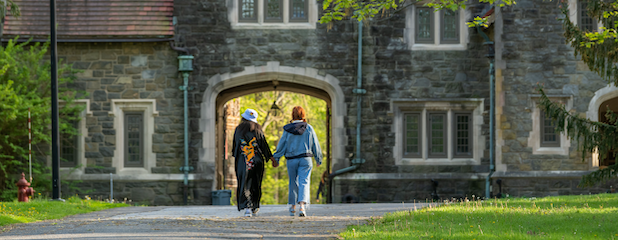
Bard College. A private liberal arts institution located in Annandale-on-Hudson, New York (near Rhinecliff, about 90 miles upriver from Manhattan), renowned for its innovative approach to higher education and commitment to civic engagement.
Founded in 1860 as St. Stephen’s College, Bard has evolved from its Episcopal roots into a globally recognized, independent, coeducational college of the liberal arts and sciences. The campus, overlooking the Hudson River and the Catskill Mountains, is a National Historic Landmark and offers a picturesque setting that fosters both academic and creative pursuits.
With an undergraduate enrollment of approximately 2,296 students as of fall 2023 and a total student body nearing 3,000, Bard College maintains a close-knit academic community. The college’s 1,260-acre rural campus is home to state-of-the-art facilities, including the Fisher Center for Performing Arts and the Hessel Museum of Art, and supports nearly 100 student-run clubs and organizations.
Bard’s academic offerings are distinguished by a strong core curriculum, a renowned Conservatory of Music, and over 35 affiliated programs, institutes, and centers spanning multiple countries and continents.
Bard College’s mission emphasizes intellectual curiosity, a love of learning, and a dedication to linking higher education with civic participation. The college is selective, with an acceptance rate of about 50.7%, and draws students from across the U.S. and more than 40 countries, with international students making up over 18% of the undergraduate population.
Bard’s global reach is further extended through campuses and partnerships in cities such as New York, Boston, and Berlin, as well as early college programs and global affiliates.
History and Milestones
Bard College began as St. Stephen’s College, granting its first liberal arts degrees in 1866. The college underwent significant expansion and transformation throughout the 20th century, including a period as an undergraduate college of Columbia University in 1928. Bard’s resilience was tested during the Great Depression, when support from prominent figures like Franklin D. Roosevelt (also Episcopal) helped secure its future. In 1934, the institution was renamed Bard College in honor of John Bard, its founder61.
Academic and Campus Life
Bard’s academic environment is characterized by a high level of scholarly discourse and close faculty-student interaction. The college’s core curriculum encourages students to explore individual academic interests while building a strong intellectual foundation. Bard’s student life is vibrant, with opportunities for outdoor recreation, volunteerism, and cultural engagement. The college has no Greek system, emphasizing inclusivity and community. About half of Bard students study abroad before graduation, reflecting the institution’s global orientation.
Notable Features and Achievements
- Bard College is ranked #71 among National Liberal Arts Colleges in the 2025 U.S. News & World Report rankings.
- The college’s endowment stands at over $412 million, supporting a wide range of academic and extracurricular programs.
- The college is known for its annual Bard Music Festival and SummerScape, which draw international attention.